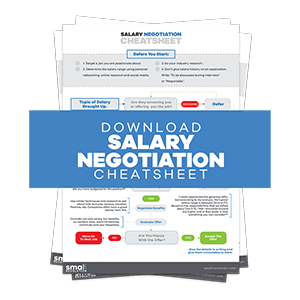Being your own boss is not all it’s cracked up to be. You’re often subject to the whims of the hand that feeds you: your client.
At the beginning of your freelance copywriter career, you remain open to all types of clients. You can’t afford to be picky.
Although freelancers would prefer to work with good clients throughout, the unpleasant ones have the surprising advantage of building your resilience.
Besides, you won’t always have the luxury of dropping a horrible client.
How do you identify them from the start?
This all-too-familiar list of nasty clients will leave you with mixed feelings about the copywriting business.
But on the flip side, you’ll walk away with a few tips on what to do when you meet them.
The ‘Me, Me, Me’ Client
This client disappears for long periods and shows up when the work is done. They don’t respond to your requests for clarity. They merely show up with admonishments and negative feedback.
Then there are those on the other side of the responsiveness spectrum.
They expect you to be at their beck and call as they micromanage you and doubt your approach.
Changing deadlines as they please is their forte, and they often get in the way of work-life balance.
They usually have trust issues and are unsure of your expertise so drown their unreasonable demands in exemplary results.
If they pay you bucket loads of cash to work within tight deadlines, well and good.
What’s unacceptable is a client expecting you to be available for work 24/7 when they don’t acknowledge how you’ve sacrificed your personal time.
This breeds resentment. Before you know it, you’re completely disengaged, unfulfilled and seriously considering a career change.
How to Manage the High Maintenance Client
- Reinstate your boundaries: Even better, have a termination clause in your contract because these red flags are difficult to see when you first meet the client.
- Manage expectations: Give the client regular updates of the project. They’ll be less likely to contact you at odd hours when they know that they’ll hear from you soon.
The ‘Just Wow Me’ Client
“Surprise me!” is a constant refrain for clients who don’t know what they want. They also like to say things like, “I don’t know what I want, but I’m sure this isn’t it.”
You’ll notice they sidestep your questions and need for feedback, lying in wait to see what you’ll come up with. Then they send countless revision requests.
Imagine a client who repeatedly demands a font edit here or an inclusion there then follows it up with numerous changes.
By the time the article is done, you’ve spent more time than you had initially planned to accomplish the task.
Are you familiar with this? There’s a term for it: scope creep.
Scope creep is a phenomenon where a project’s deliverables increase over its lifespan.
For instance, what started as a writing assignment ends up involving off-page SEO or graphic design.
To make the article stand out, the client keeps suggesting changes without discussing payment for additional hours.
An appropriate question to ask a client at this stage would be, “Would you like an estimate for this task?”
That should put things into perspective. They will either agree to it or if they’re not ready to part with more cash, ask you to forget about the changes altogether.
It also poses an opportunity to iron out any misunderstandings if they think the changes were included in the initial cost.
You could also try sending a zero balance invoice after every quick fix (one that takes less than 30 minutes) so the client realizes how much of your time you’re giving out for free.
Some view this as a passive-aggressive move, but the client won’t feel ripped off if you started charging for more because your value is on full display.
How to Manage the Scope Creep
- Involve the client in your creative process. Once you have a plan of action, report your progress so the client can give timely feedback.
- Give alternative suggestions to unrealistic demands. A good client will keep their ears open if you propose an approach that saves both of you time and money
- Limit the number of people that can make requests. Make it abundantly clear that every request comes with delays and added costs so the client designates only a few people to relay these demands.
The ‘Can’t Pay, Won’t Pay’ Client
If they haggle on price, run.
If they promise more work a little way down the road, flee.
If they prefer to pay you in exposure, go like the wind!
All this simply reveals that they don’t value your expertise or your time.
Window shoppers also fall into this category. They like to question your rates and communicate with you too much before hiring you.
After your productive tête-à-tête, they apply your ideas or hire a cheaper writer to do it.
Luckily, these signs are visible from the onset, so you can just decline this client’s offer and find one willing to pay what you deserve.
How to Manage the Tyre Kicker
- Anchor your price: Give the client a price comparison so they don’t feel like they’re overpaying. You could say, “I’d usually charge $30 per hour but I’m looking for a project like this to add to my portfolio, so I’ll do it for $20 per hour.”
- Justify the cost: Break down the project tasks into line items and how much you plan to charge for each. This will help the client understand your charges.
The ‘Up to No Good’ Client
As a copywriter, you know how tedious it can be to create remarkable work.
Yet, there are people who take this process for granted and even encourage their writers to plagiarise.
Still, there are those clients who don’t want to spend money on professional photography or stock images, so they nudge you to use copyrighted visuals.
This illustrates their disrespect for your skills and other people’s time and intellectual property.
How to Manage the Fraudulent Client
- Give wise counsel: Demonstrate to the client how plagiarism will negatively affect their business in the future.
- Put yourself first: Ask the client if they have any plans against litigation and make sure your contract protects you from lawsuits that might emerge as a result.
On the flip side, once in a while, you’ll happen upon a client who will validate your decision to go freelance.
The ‘Happily Ever After’ Client
Some copywriting gigs end up being a good fit, and clients who are impressed with your work decide to keep you on for years.
They also tend to work with you exclusively, which brings in a lot of work requests, increasing your earning ability.
How do you spot them? They’re usually small- and medium-sized businesses.
They don’t like the inconvenience of on-boarding new hires every time and prefer to outsource specialist tasks to freelancers.
A reliable, highly skilled copywriter is a rare bird, and no one is more eager to keep one than a time-poor business owner.
Marketing and PR agencies also fall into this category. The quick turnarounds that they require will keep you on your toes.
Working with these clients challenges you to properly manage your time and quickly understand copywriting briefs.
You also get to network with other creatives and marketing specialists who can refer you in future.
The Money Maker Client
This is the unicorn of copywriting clients.
An example is a large corporation. They show up with a high volume of work and pockets that don’t quit.
Your contact person at the company is usually a professional who’s clear on deliverables and what value you bring to the team.
This client will change your standard of living. If you’re able to quote a name brand to a prospective client, that will make them sign on the dotted line, ASAP!
When you meet great clients, you’ll do everything you can to keep them. You’ll ask them for feedback and learn from your mistakes.
Most importantly you’ll consistently deliver high-quality work and increase your copywriter salary. This is only possible if you challenge yourself and learn new skills every day.
Photo by katemangostar


